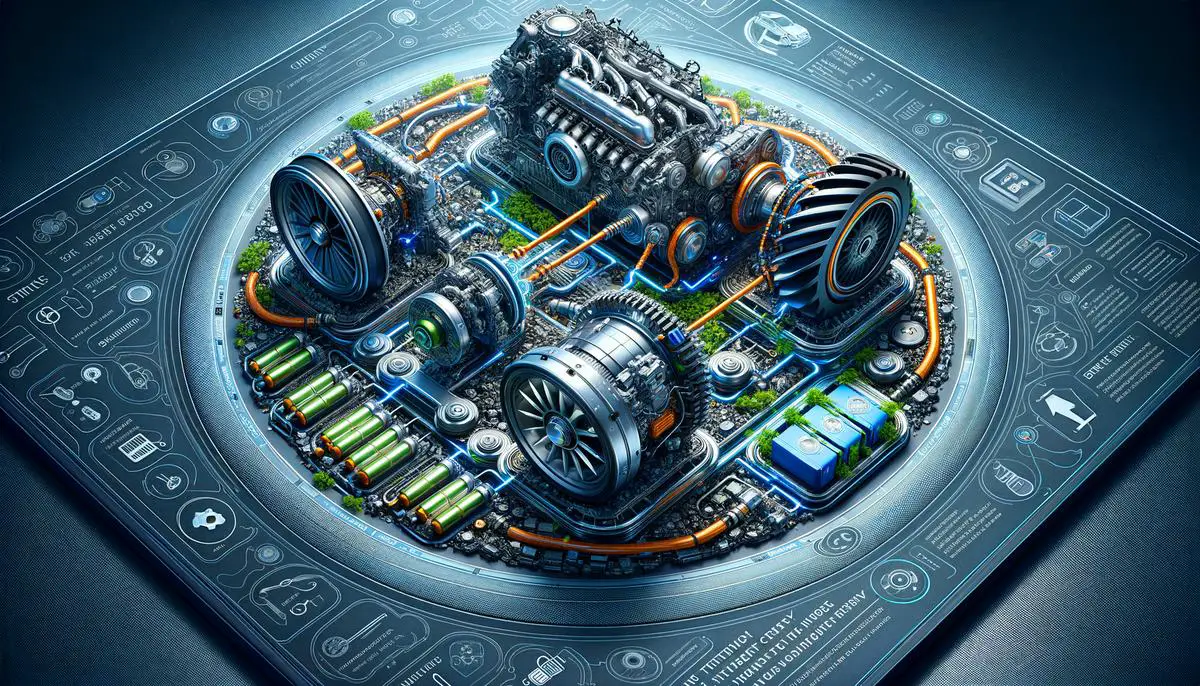Contents
Overview of Engine Configurations
Front-mounted engines are commonly found in personal vehicles, where the engine is placed in the front and powers the front or all four wheels. This setup helps with traction by placing the engine's weight over the driven wheels, making it efficient at channeling power to the road and simplifying maintenance access.
Mid-mounted engines are less common and situate the engine near the vehicle's center beneath the passenger compartment. This balances the weight distribution, contributing to superior handling and stability in sharp maneuvers. Sports cars often embrace this layout, as it makes vehicles feel more responsive.
Rear-mounted engines place the engine at the back of the car. While they can improve acceleration and traction at the rear wheels, they might also lead to handling quirks due to excessive load on the back tires, causing the rear to swing out during cornering.
Underwing engines are distinctly used in aircraft. Positioned beneath the wings, these engines help absorb aerodynamic forces, providing better fuel efficiency and reducing structural stress. The accessibility of these engines also makes maintenance more practical on larger aircraft.
Each engine configuration caters to the specific needs of different vehicle types and their expected performance objectives. From traction enhancement in front-mounted setups to the exceptional balance afforded by mid-mount designs, each system offers distinct advantages. Underwing engines in aviation are driven by the need for efficiency and practical physics. These setups allow engineers to customize designs according to operational demands, ensuring both performance and safety are optimized for the user experience.
Advantages and Disadvantages of Front-Mounted Engines
Front-mounted engines are favored for their efficacy in managing weight distribution, which enhances traction. This configuration also affects driving dynamics, from day-to-day drivability to maintenance accessibility.
The front engine design places the bulk of a vehicle's weight over the drivetrain in front-wheel drive models. This additional weight on the front wheels can improve handling by preventing slippage during acceleration, particularly on slick or uneven roads. The weight directly over the driving wheels makes this arrangement inherently stable, a quality most drivers appreciate, especially under adverse conditions.
Front-mounted engines provide a straightforward approach to vehicle layout and manufacturing, simplifying assembly lines and repair work. However, this engine placement can lead to understeer, where the car turns less than intended by the driver, especially when traversing curves at higher speeds or during abrupt steering maneuvers.
To balance this, vehicle engineers work to strike the right suspension settings and weight distribution that reduce understeer without compromising the inherent stability and tractability of the front-engine layout. Despite its drawbacks, the benefits of predictability, cost-effectiveness, and maintenance convenience keep this classic configuration as the predominant choice in consumer vehicles.
Rear-Mounted Engines in Performance and Racing
Rear-mounted engines are a favorite among high-performance and racing cars due to their dynamic advantages in acceleration, weight distribution, and overall handling. The Porsche 911, for example, demonstrates superb agility on racing tracks mainly because of its inherent design principles.1
Having the engine mounted at the rear shifts more weight over the back wheels, enhancing traction during rapid acceleration from a standstill or low speed. This is crucial when exiting corners powerfully. The physics behind this leans upon the principle that weight over the driving wheels aids in higher traction levels, allowing the vehicle to make better use of its power when it matters most.
Enhanced rear-wheel traction also impacts handling. Cars with rear-mounted engines often encourage "power oversteer," allowing drivers to finely control the car's rear slip angle with throttle adjustments. While this might present a steeper learning curve, it delivers exhilarating performance once mastered. Skilled drivers can initiate and maintain drifts or quickly adjust their line through a corner using just the throttle.
The weight dynamics of rear-engine vehicles change less when accelerating since most of their mass is already over the drive wheels. This consistency leads to more predictable behavior during speed transitions, offering more stable acceleration without significant shifts in weight distribution.
However, this bias towards the rear can bring drawbacks such as potential challenges in slow-speed tractability and increased susceptibility to oversteer under certain conditions. Precision and moderation become crucial in managing the pronounced agility around tight turns or when performing high-speed cuts. For racing purposes, adjusting suspension settings, tweaking the aerodynamic load, and employing advanced throttle management techniques mitigate these issues while enhancing the car's swift capabilities.

Engine Placement in Aircraft
Underwing engines in commercial airliners and rear-mounted engines in business jets are driven by distinct needs dictated by their operational environments and design objectives.
Commercial airliners prioritize efficiency, maintenance feasibility, fuel economy, and the minimization of noise intrusion into the cabin. The popular underwing engine configuration supports these objectives by utilizing the space below the wing, minimizing aerodynamic penalty while handling significant thrust levels needed for larger aircraft.2 This arrangement efficiently stabilizes the load, minimizes wing bending moments during flight, and simplifies fuel feeding logistics. Engine accessibility for maintenance also becomes straightforward, preventing foreign object damage during takeoff and landing phases.
Passenger comfort benefits from noise reduction in this configuration, as engines placed under the wings and farther from the fuselage mute the sound reaching the cabin. The architecture of these aircraft allows sufficiently raised landing gears, minimizing potential debris impact and simplifying structural design elements.
In contrast, business jets demand agility and grounding characteristics suitable for airstrips with limited facilities. Rear-mounted engines preserve crucial ground clearance, with shorter landing gears helping maintain soft field landing capabilities and functioning airstair doors directly from tarmac levels.
Rear-mounted engines in business jets also place noise emissions and vibrations away from the passenger cabin, ensuring a quieter flight experience. This positioning reduces acoustic and vibration disturbances, contributing to traveler comfort over frequent short-duration journeys. Rear-mounted engines lessen risks posed by ground debris and water ingestion, reducing maintenance needs and enhancing safety protocols. This approach allows for more efficient use of fuselage space, conducive to spacious layouts typical of business jets prioritizing onboard luxury and accessibility.

- Porsche 911 – The Quintessential Sports Car. Porsche AG. 2021.
- Babikian R, Lukachko SP, Waitz IA. The Historical Fuel Efficiency Characteristics of Regional Aircraft from Technological, Operational, and Cost Perspectives. Journal of Air Transport Management. 2002;8(6):389-400.


